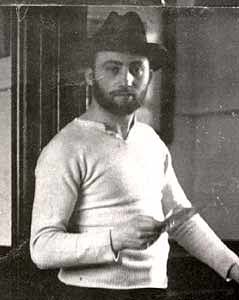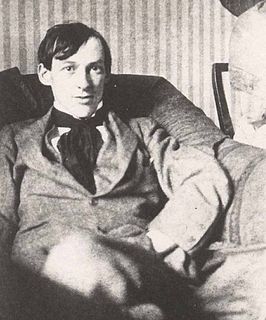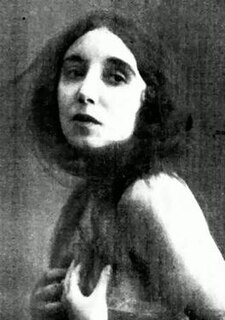
Nina Hamnett was a Welsh artist and writer, and an expert on sailors' chanteys, who became known as the Queen of Bohemia.

David Garshen Bomberg was a British painter, and one of the Whitechapel Boys.

Paul Nash was a British surrealist painter and war artist, as well as a photographer, writer and designer of applied art. Nash was among the most important landscape artists of the first half of the twentieth century. He played a key role in the development of Modernism in English art.
John Northcote Nash was a British painter of landscapes and still-lives, and a wood engraver and illustrator, particularly of botanic works. He was the younger brother of the artist Paul Nash.
Events from the year 1918 in art.

The Fitzroy Tavern is a public house situated at Charlotte Street in the Fitzrovia district of central London, England, owned by the Samuel Smith Brewery.

The Colony Room Club was a private members' drinking club at 41 Dean Street, Soho, London. It was founded and presided over by Muriel Belcher from its inception in 1948 until her death in 1979.
The Westminster School of Art was an art school in Westminster, London.

Thomas Evelyn Scott-Ellis, 8th Baron Howard de Walden, 4th Baron Seaford was an English peer, landowner, writer and patron of the arts.

James Dickson Innes was a British painter, mainly of mountain landscapes but occasionally of figure subjects. He worked in both oils and watercolours.
Dorothy (Dorelia) McNeill was best known as a model for the Welsh artists Gwen John and Augustus John, was the common-law wife of the latter, and has been credited for inspiring "his first unequivocally personal work". In her time she was regarded by some as an exemplar of bohemian fashion.
Adrian Maurice Daintrey, RWA (1902–1988) was a British portrait and landscape painter.

Fred Groves was a British actor. On stage from 1896, he appeared in the original West End production of Noël Coward's Cavalcade (1931-2); and was a leading man in silent films, latterly becoming a character player in movies. He appeared in the 1925 play Number 17 in the West End.

Betty May was a British singer, dancer, and model, who worked primarily in London's West End. She was a member of the London Bohemian set of the inter-war years, claimed to have joined a criminal gang in Paris, was associated with occultist Aleister Crowley, and sat for Augustus John and Jacob Epstein. She became known as the "Tiger Woman". She adopted the name Betty May early in life, for reasons that are unclear.

The Wheatsheaf is a pub in Rathbone Place, Fitzrovia, London, that was popular with London's bohemian set in the 1930s. Its customers included George Orwell, Dylan Thomas, Edwin Muir and Humphrey Jennings, who were known for a while as the Wheatsheaf writers Other habitués included the singer and dancer Betty May, and the writer and surrealist poet Philip O'Connor, Nina Hamnett, Julian Maclaren-Ross, Anthony Carson and Quentin Crisp.

Norine Fournier Lattimore, known as Dolores, was an artists' model who was a fixture on London's bohemian scene between the First and Second World Wars. She posed for Jacob Epstein, for whom she played the role of "the High Priestess of Beauty" and who called her "the Phryne of modern times". The Hearst Press in America, who sensationally serialised her life story, called her The "Fatal Woman' of the London Studios". She was a contemporary of Betty May, Euphemia Lamb and Lilian Shelley.

Lilian Shelley was a popular music hall entertainer and later artists' model in London in the early 1900s known as "The Bug" or "The Pocket Edition". She posed for Jacob Epstein and Augustus John. John's portrait of Shelley was described as one of the "star turns" in an exhibition Pictures of Women at the Wildenstein Galleries, London, in 1940. He called her "Bill".

Euphemia Lamb was an English artists' model and the wife of painter Henry Lamb. She modelled for Augustus John and Jacob Epstein and came to exemplify the sexual freedom of the bohemian lifestyle of the early twentieth century. Henry Lamb called her Euphemia, by which name she was generally known. John Maynard Keynes commented that Euphemia had more of a sex life "than the rest of us put together". She was one of the lovers of the occultist Aleister Crowley.
The Chenil Gallery was a British art gallery and sometime-music studio in Chelsea, London between 1905 and 1927, and later the location of various businesses referencing this early use.















